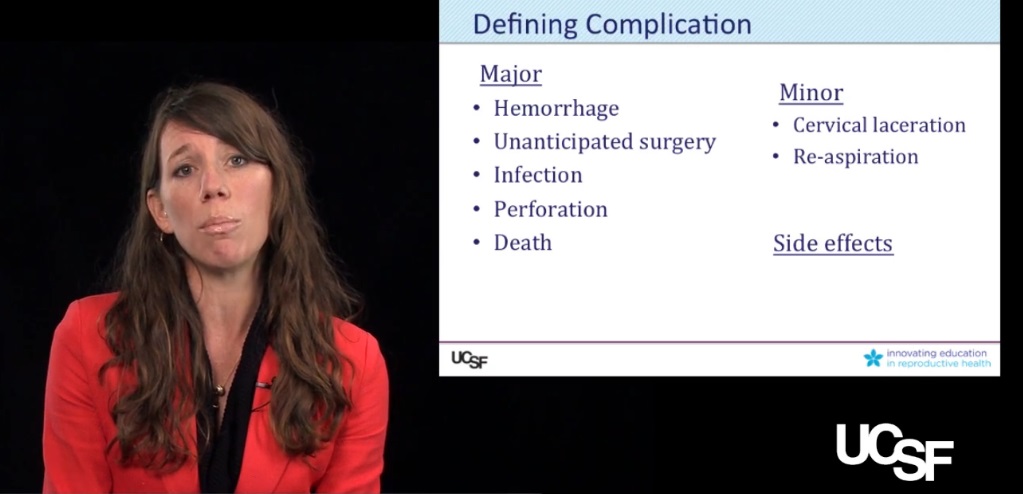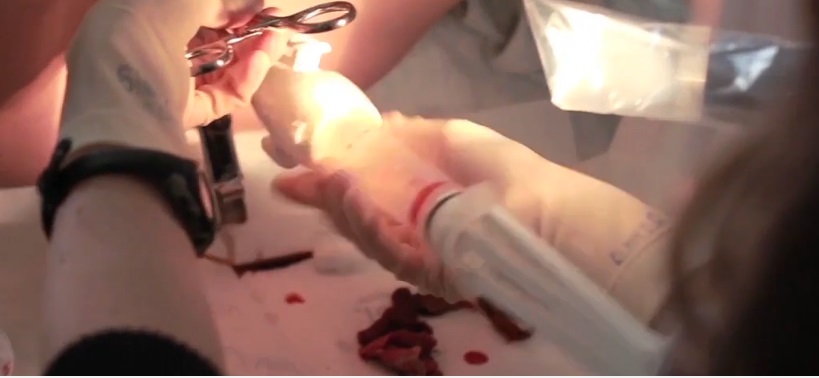Despite the fact that the abortion industry opposes requiring a pre-abortion ultrasound, and they push dangerous self-managed or “home use” abortions, an unearthed training video published by Innovating Education in Reproductive Health and taught by a staffer at the University of California San Francisco (UCSF) states that using ultrasound to determine gestational age, even in the first trimester – especially for training scenarios – can mitigate the possibility of complications. To hear first trimester abortions discussed by the media or the abortion industry’s PR machine, you’d never know it had any risks at all.
But videos from UCSF’s Bixby Center for Global Reproductive Health, which prides itself on abortion as a focus and claims that their work has “led to new methods of abortion and expanded the abortion care workforce,” tell a different story. Bixby trains abortion providers though its Ryan Residency Training Program.
Narrated by Dr. Jennifer Kerns, the video “Managing complications of procedural abortion, part 1: In the first trimester,” describes several potential serious complications from first trimester abortions:

Jennifer Kerns, UCSF training complications, first trimester abortion
•Cervical laceration
•Re-aspiration
•Excessive bleeding
•Excessive pain
• Hemorrhage
• Unanticipated surgery
• Infection
• Perforation of the uterus
• Death
Kerns recommends “visual inspection of products of conception” after an abortion as well, because “[i]t truly is the standard of care for ensuring that the first trimester surgical abortion is a complete abortion.”
Yet in another training video from UCSF, first trimester abortion is downplayed as practically risk-free. The training lecture, entitled, “First-Trimester Aspiration Abortion,” is presented by Andrea Jackson, MD, an assistant professor of Obstetrics, Gynecology and Family Planning at UCSF.
Dr. Jackson begins by claiming legal abortion is safe and one of the most common medical procedures performed in the US. However, despite the obvious bias, there is no mention of the development of the preborn child in the womb.
In the video, Jackson describes two different first trimester abortion methods, the first of which is manual uterine aspiration — often referred to as a miscarriage technique. (Of course, there is a big difference between the removal of a child that has died in utero as a result of a miscarriage and the deliberate and direct killing of a developing human in utero through abortion.)
Jackson describes the MUA abortion tool as “small and portable” noting that “it doesn’t require electricity.” This procedure can be seen at Bixby’s Innovating Education, labeled under “early pregnancy loss.” Warning… these are graphic. They include:
View here (graphic).
“Once the uterus is empty,” says Jackson, “the clinician can feel a gritty texture along with the feeling that the uterus is contracting around the cannula as it becomes harder to move the cannula.”

Early Pregnancy Uterine Aspiration with MUA
The second aspiration technique is what most people commonly think of when referencing a first trimester surgical abortion, using a vacuum aspiration machine. Jackson states that this procedure “makes a lot of noise” and “requires a large device” and electricity.
Dr. Anthony Levatino explained this type of procedure at AbortionProcedures.com:
Jackson details the “basic steps” for a first trimester abortion using EUA, as follows:
• Counseling
• History, physical exam, condirmation of [Inter Uterine pregnancy] (IUP)
• Medication
• Positioning, clean cervix, para-cervical block
• Cervical dilation
• Aspiration
• Evaluation of products [of conception]
• Observation, contraception, antibiotics, Rhogam
Jackson warns her students that the use of “sharp curettage” is no longer recommended and describes the tool as a “slower procedure” with increased risks and complications. According to Jackson, the World Health Organization has released a statement that this instrument “shall no longer be used for first trimester abortion, and that suction curettage should be the standard of care.”
Jackson states using the sharp curettage increases “major complications, specifically bleeding,” and, “puts the patient at higher risk for her future reproductive ability.”
Jackson claims the complication rate after a first trimester abortion is low, but she reiterates that of all the complications that can occur, “infection is the most common.”
Live Action News has detailed the way that abortion clinics and Planned Parenthood like to market abortion as safe and simple, however, a look at the legal documents (consent forms) they require patients to sign make it clear that there are many serious potential complications from a first trimester or early abortion. Live Action News has documented how, in many cases when these complications occur, it is the abortion patient who will pay.
For more information about UCSF, click here.
“Like” Live Action News on Facebook for more pro-life news and commentary!






